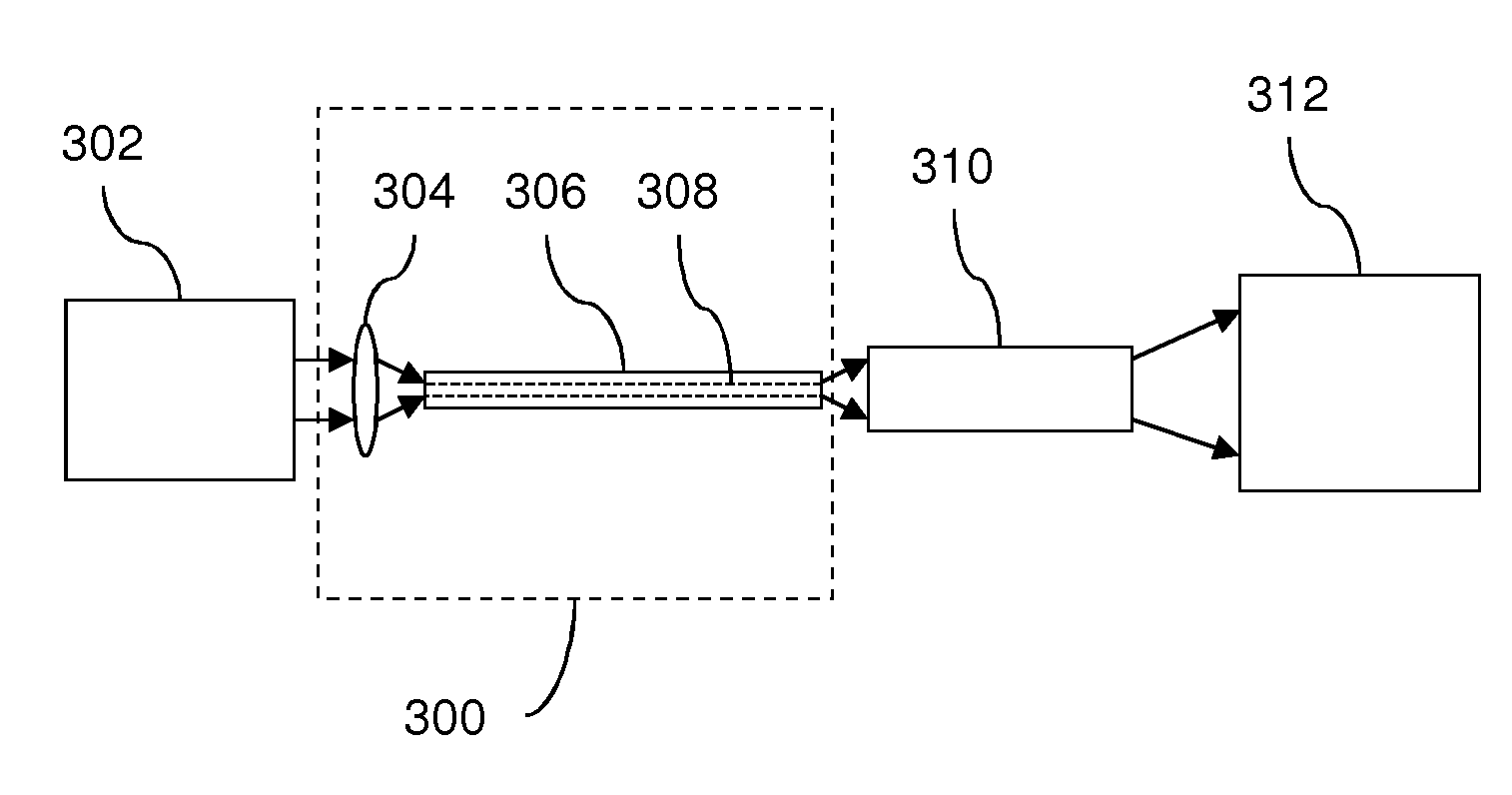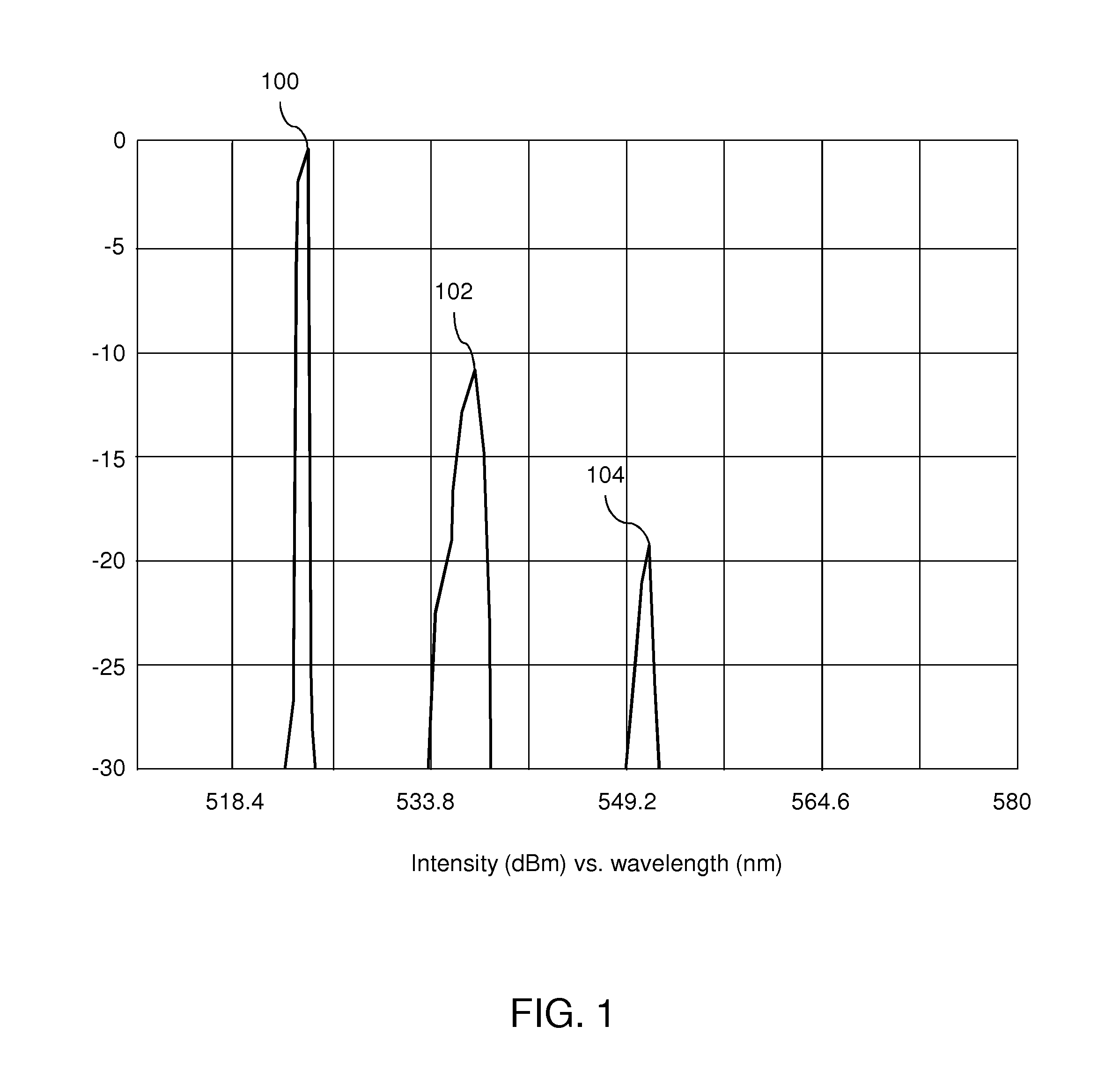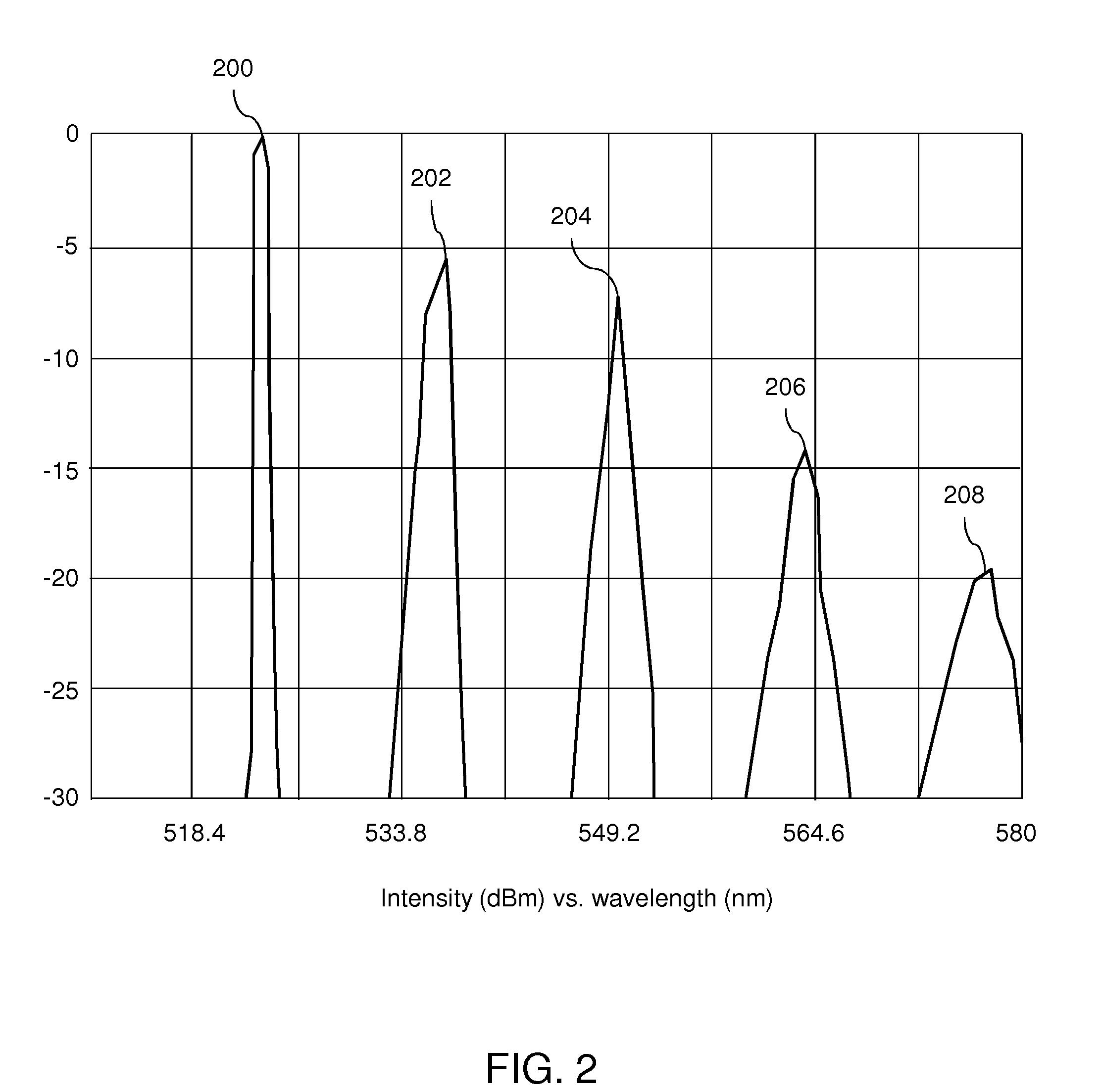Frequency Control of Despeckling
a technology of despeckling and frequency control, applied in the field of frequency control of despeckling, can solve the problem that the coherence of laser light tends to produce undesirable speckles in the viewed image, and achieve the effect of reducing the speckle of light outpu
- Summary
- Abstract
- Description
- Claims
- Application Information
AI Technical Summary
Benefits of technology
Problems solved by technology
Method used
Image
Examples
Embodiment Construction
[0024]Raman gas cells using stimulated Raman scattering (SRS) have been used to despeckle light for the projection of images as described in U.S. Pat. No. 5,274,494. SRS is a non-linear optical effect where photons are scattered by molecules to become lower frequency photons. A thorough explanation of SRS is found in Nonlinear Fiber Optics by Govind Agrawal, Academic Press, Third Edition, pages 298-354. FIG. 1 shows a graph of stimulated Raman scattering output from an optical fiber at a moderate power which is only slightly above the threshold to produce SRS. The x-axis represents wavelength in nanometers (nm) and the y-axis represents intensity on a logarithmic scale in dBm normalized to the highest peak. First peak 100 at 523.5 nm is light which is not Raman scattered. The spectral bandwidth of first peak 100 is approximately 0.1 nm although the resolution of the spectral measurement is 1 nm, so the width of first peak 100 cannot be resolved in FIG. 1. Second peak 102 at 536.5 nm...
PUM
 Login to View More
Login to View More Abstract
Description
Claims
Application Information
 Login to View More
Login to View More - R&D
- Intellectual Property
- Life Sciences
- Materials
- Tech Scout
- Unparalleled Data Quality
- Higher Quality Content
- 60% Fewer Hallucinations
Browse by: Latest US Patents, China's latest patents, Technical Efficacy Thesaurus, Application Domain, Technology Topic, Popular Technical Reports.
© 2025 PatSnap. All rights reserved.Legal|Privacy policy|Modern Slavery Act Transparency Statement|Sitemap|About US| Contact US: help@patsnap.com



